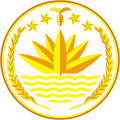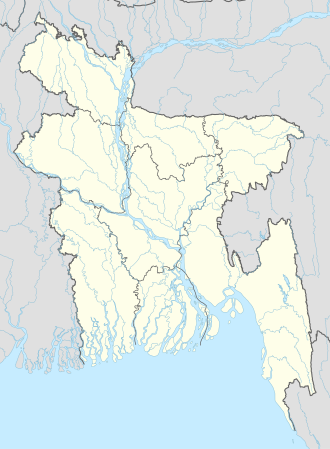This article's factual accuracy may be compromised due to out-of-date information.(November 2024) |
| This article is part of a series on the |
| Politics of Bangladesh |
|---|
 |
| |
This article presents a list of cities and towns in Bangladesh. According to the Bangladesh Bureau of Statistics and the Ministry of Local Government, Rural Development and Co-operatives of Bangladesh, there are 532 urban centres in Bangladesh. [1] [2]
Contents
- Major Urban agglomerations
- City Corporations
- Metropolitan areas
- Largest Paurashavas
- Towns
- Urban areas by population
- See also
- References
- External links
The bureau defines an urban centre with a population of 100,000 or more as a "city". Altogether, there are 43 such cities in Bangladesh. 12 of these cities can be considered major cities as these are governed by city corporations. All of city corporation-governed cities currently have a population of more than 200,000, which is not a criterion for the status, because currently 17 cities in Bangladesh have a population of more than 200,000. Besides the 9 major cities, there are 32 other cities in Bangladesh that are not governed by city corporations and rather by municipal corporations. A city with a population of more than 10,000,000 is defined by the bureau as a megacity. Dhaka is the only megacity in Bangladesh according to this definition. [3] Together, Dhaka and the port city of Chittagong account for 48% of the country's urban population. [4]
An urban centre with a population of less than 100,000 is defined as a "town". In total, there are 490 such towns in Bangladesh. [3] Among these, 287 towns are governed by "Municipal Corporations". These are called "Paurashava"s in the local Bengali language. Altogether, including the ones governing the 32 other non-major cities, there are 330 municipalities.
In addition, there are another 203 towns which are upazila centres (and other urban centres) and not governed by any Municipal Corporation or "Paurashava". These are the non-Municipal Corporation or "non-Paurashava" towns. [3] [2]
In 1951, Bangladesh was mostly a rural country and only 4% of the population lived in urban centres. The urban population rose to 20% in 1991 and to 24% by 2001. In 2011, Bangladesh had an urban population of 28% and the rate of urban population growth was estimated at 2.8%. [3] At this growth rate, Bangladesh's urban population would reach 79 million or 42% of the population by 2035. The urban centers of Bangladesh have a combined area of about 10600 square kilometers, which is 7% of the total area of Bangladesh. As such, Bangladesh has a very high urban population density: 4028 persons per square kilometer (2011), whereas the rural density is significantly lower: 790 persons per square kilometer (2011). [1] The number of municipalities tripled from 104 municipalities in 1991 to 318 municipalities in 2011, and currently 330. [4]



















